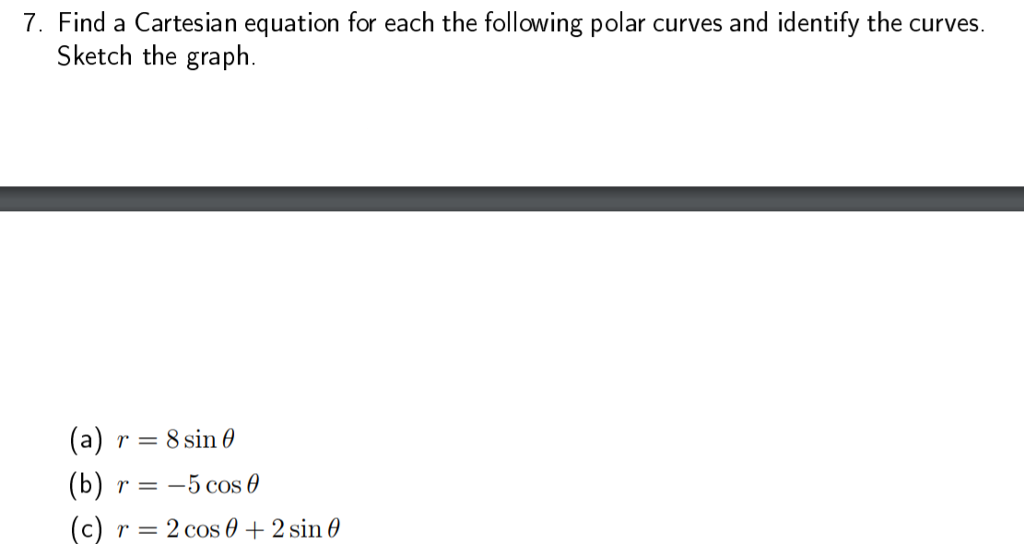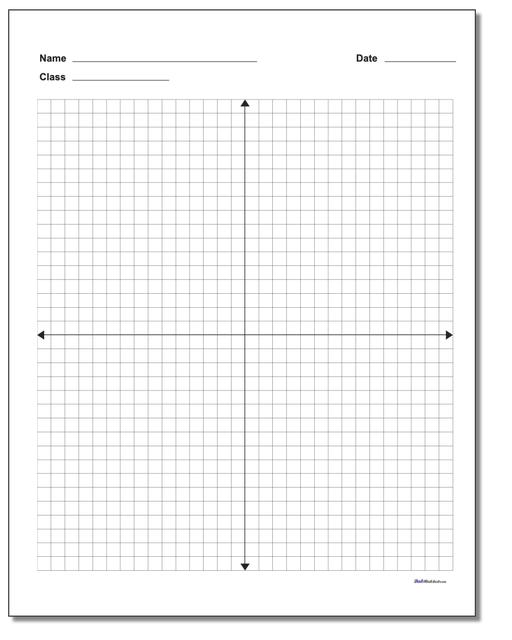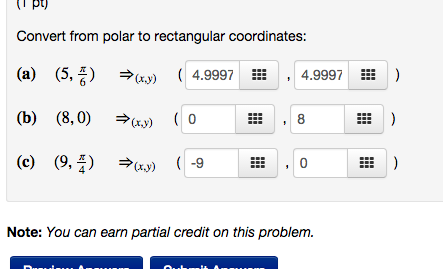

Solving Cartesian equation of a curve To solve the Cartesian equation of a curve is not an easy task.

Establish the formula v vFind the rectangular equation and orientation of the curve. What do you understand by total internal reflection? Directions: Question numbers 9-10 are long answer type questions. Why is it considered a good fuel? rectangular glass block. On the other hand, let’s do the conversion from spherical to Cartesian coordinates.7. In our example, the results are as follows:Įxample – Converting Spherical to Cartesian angle φ in desired units (radian, degree, etc.).θ angle in desired units (radian, degree, etc.).Read the values of the obtained coordinates, and that Enter x, y, z values in the provided fields.However, we will do it much easier if we use our calculator as follows: To convert these coordinates into spherical coordinates, it is necessary to include the given values in the formulas above. Example – Converting Cartesian to Sphericalįor example, let’s take the coordinates of a point in a rectangular 3D system, as below: The Cartesian coordinates are the abscissa (on the x-axis), the ordinate (on the y-axis), and the applicate (on the z-axis).Īs you can see, we are mostly dealing here with trigonometric functions, so if you have any difficulties, see this Trigonometric Functions Calculator, or directly you can visit Cosine or Arccos Calculator, to get better information. The Cartesian, Rectangular, or Rectangular Cartesian coordinate system in space is determined by three mutually perpendicular directions x, y, z, which intersect at the origin O. Azimuthal angle φ is the rotation angle from the initial meridian plane with a positive counter-clockwise direction. If one is known with polar coordinates, then the angle θ isn’t difficult to understand as it is essentially the same as the angle θ from polar coordinates. They determine the position of a point in three-dimensional space based on the distance ρ or r from the origin and two angles θ and φ. Spherical coordinates are a little challenging to understand at the beginning. The value of π radians refers to 180° (degrees) in angular units, two π = 360°, etc. The numeric value of π rounded to 64 decimal places is given below: The symbol ρ (rho) is also used instead of r.Įach point/shape in space is uniquely determined when the values of above coordinates are limited: In other words, spherical coordinates ( r, θ, φ) are radial distance r (distance to origin), polar angle θ (theta) (angle referring to the polar axis), and azimuthal angle φ (phi) (angle of rotation from the initial meridian plane). In math, the Spherical coordinate system is a system for representing a body in three dimensions using three coordinates: the distance of the point from the fixed zero point (radius), the angle that connects the line connecting the point with the origin with the positive part of the z-axis (zenith) and the angle of the same line with the positive part of the x-axis (azimuthal angle). There are several different coordinate systems in mathematics and other fields, such as Cylindrical coordinates, but here we will talk about the Spherical and Cartesian systems.

Spherical coordinate systemĪ coordinate system is a system that allows points on a curve, line, surface, plane, or space to be described using numbers, so-called coordinates. There is our Three-Dimensional Distance tools as well.

On the other hand, take a look at some of our solutions, especially in the field of math, such as the Area of the Right Triangle Calculator, or some in the physics section, such as the Belt Length calculation tool. Then, we will do a few examples of calculations. Similarly, you can enter Spherical coordinates and get the Cartesian coordinates.įurthermore, this article will briefly say something about the spherical coordinate system, it’s coordinates and their shapes and formulas, and rectangular coordinates. All you need to enter are Cartesian coordinates in metric units, after which you will get Spherical coordinates in the form of radius, theta, and phi. This can be done using the Spherical Coordinates Calculator, which also allows reverse conversion from Spherical Coordinates to Cartesian 3D Coordinates. CalCon has developed a tool for calculating Spherical coordinates based on Cartesian coordinates.


 0 kommentar(er)
0 kommentar(er)
